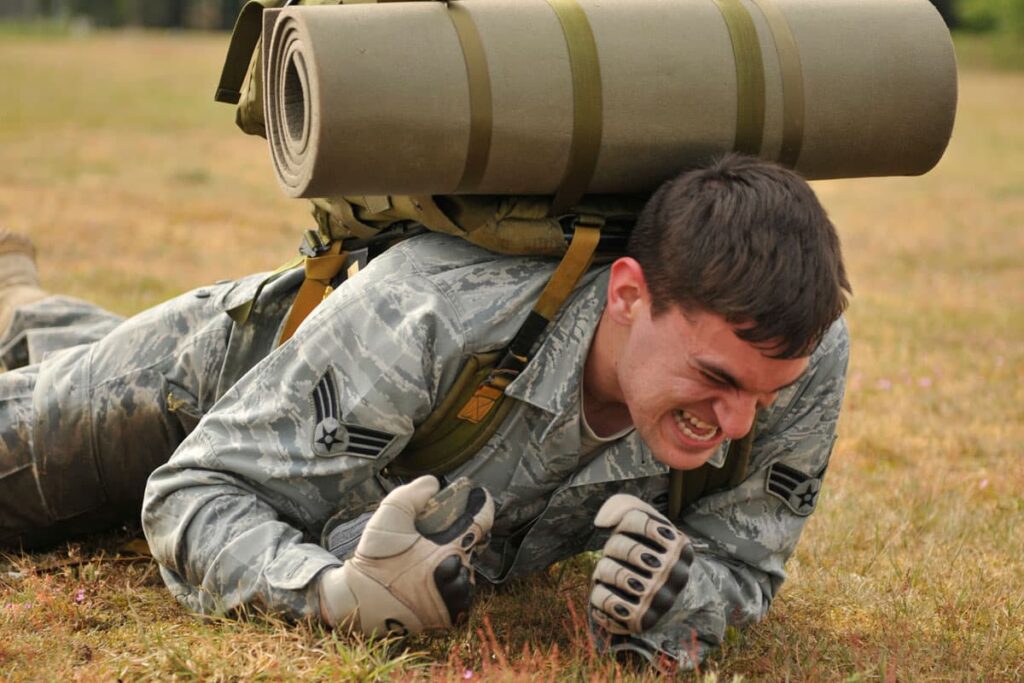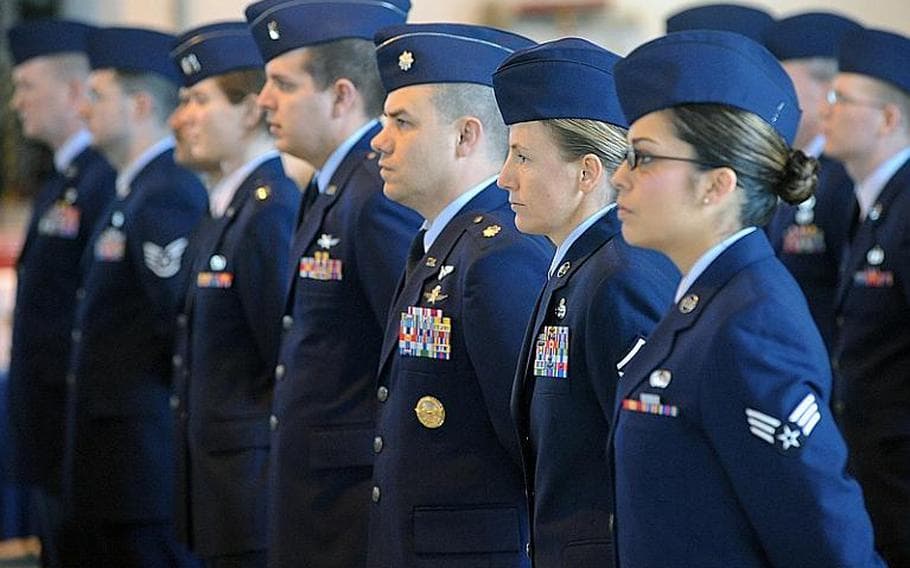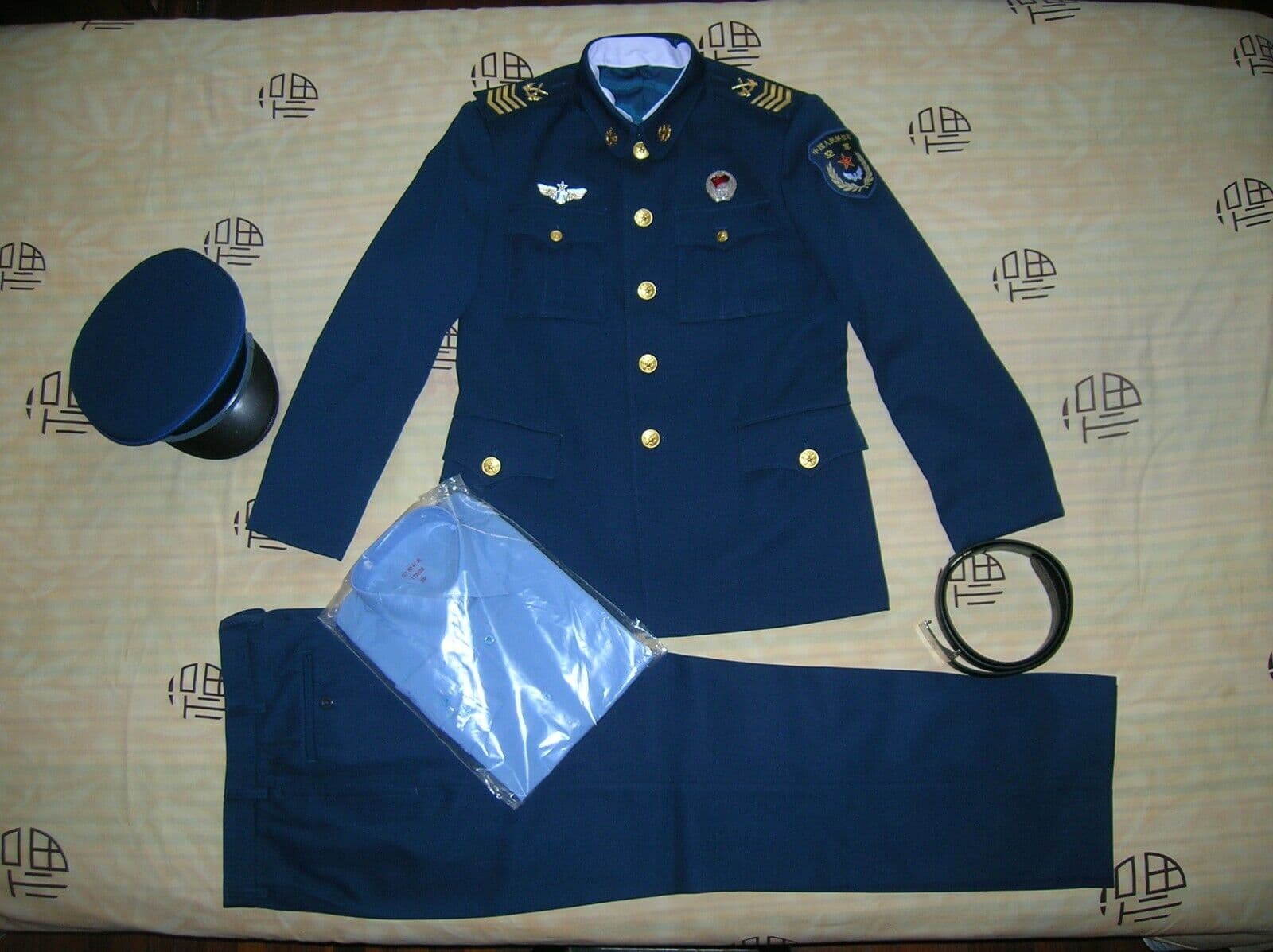Uniformity and professionalism are integral parts of every branch of the military. Airmen are expected to follow stringent guidelines that ensure they look the part and always maintain high standards.
Recently, the Department of the Air Force approved several dress and appearance changes to AFI 36-2903, Dress and Appearance. Some highlights include sister service, joint unit patch wear guidance, mustaches, and more.
Airman Battle Uniform
ABUs have long been a uniform of choice for Air Force cadets and are worn by many AFJROTC units/squadrons. But that is changing.
The Airman Battle Uniform, also known as the ABU, is being phased out in favor of the Operation Enduring Freedom Camouflage Pattern (OCP), which is also worn by members of the United States Army and Navy. Originally issued to combat airmen deploying to Afghanistan, the OCP has since been made available to all Air Force personnel, including non-combat airmen.
It’s lighter and cooler than the ABU, with a new camouflage pattern that blends in better with the desert landscape. It’s also made from a 50% nylon / 50% cotton twill with a permanent press application, which makes it shrink-resistant and wrinkle-free.
The OCP also features slanted front pockets, a more ergonomically designed chest pocket, zipper closures on the sleeves and pockets, a gusseted back for added mobility, a mandarin collar, and low-maintenance foliage green suede combat boots. In addition, the OCP uses a different font and color for name tapes, rank insignia background, and commander’s badge.
Several Airmen say the OCP is much more comfortable than the ABU, and they’re also impressed by its functionality. The slanted pockets are easier to access than the ABU’s map pockets, and the zippers on the sleeves make it easier to reach things while in motion. The OCP also allows for more customization, with hook-and-loop places for AFJROTC patches, service ribbons, and unit badges.

Airman Combat Uniform
The Airman Combat Uniform, or OCP, is the current uniform worn by the majority of Air Force personnel. It was first introduced in 2011, replacing the Airman Battle Uniform (ABU) and Desert Camouflage Uniform. The OCP is a mix of tan, dark gray, sage green and slate blue with a digital tiger stripe pattern. It’s a lightweight, durable utility uniform that works well in all climates.
The new uniform also features a more modern look than the ABU. It’s wrinkle-resistant, and its pockets are slanted for better accessibility, according to Air Force Times. Also, the sleeves of the uniform feature small pencil pockets. The Airman Combat Uniform is being rolled out to all USAF members, including those stationed at home. However, it won’t replace the sage green desert boots that most Airmen currently wear with their ABUs. New OCP trousers will be issued with the coats, and those will come in both men’s and women’s sizes.
A uniform regulation memorandum from the Air Force states that all service members will be required to wear the OCP by April 1, 2021. Airmen who want to start wearing their OCPs early can do so as long as they follow uniform regulations set forth in AFI 36-2903. For instance, officers will need to wear spice brown rank insignia and American flag patches on their uniforms. These can be affixed with Velcro or sewn on.
Airman Dress Uniform
When the Air Force formed as its own branch of the DoD, one of the first things they realized they needed was a uniform. Gone were the days of rocking Army Air Corps hand-me-downs – it was time for them to roll out their own USAF look. That look eventually took the form of the Airman Dress Uniform (ADU). This official uniform for most non-flight personnel replaces the Battle Dress Uniform (BDU) and Airman Combat Uniform (ACU). The ADU is worn on work duty and at various “black tie” events such as dining in or dining out at base restaurants, commander’s holiday or New Year’s receptions, and military weddings.
The ADU is a three-piece outfit consisting of trousers, a long-sleeve shirt, and a jacket. It features two slanted front pockets, zippered side pockets, and Velcro for mounting unit patches and rank identification patches. It also features an embroidered collar for enlisted Airmen and a metal rank insignia pinned on the epaulets for officers.
The ADU can be paired with a wide variety of accessories, including black leather gloves, a sage-green or black watch cap, a hatband or visor, and a dark navy blue beret for Security Forces and tactical OCP duty. It also allows a hatband to be worn on the back of the head in lieu of a hair tie.

Air Force Blues
In the early days of the Air Force, leaders looked to boost morale and distinguish the branch from its Army counterpart by introducing a service uniform featuring blue. The exact shade of blue has changed over time, from Blue Shade 84 in the 1940s to today’s AF Blue, but the service’s iconic color remains.
A few years ago, a wing commander at Ramstein Air Force Base instituted a “Blues Monday” policy, which allowed enlisted and officer airmen to wear their blue uniform on the first Monday of every month. Senior Airman Sashia Euley says the policy was intended to remind airmen of their branch’s rich heritage.
Euley adds that the uniform can be a bit uncomfortable, and she prefers to stick with her ABU or flight suit when working at the office. The wing commander at the base also lifted the requirement for airmen to wear blues when leaving the office for lunch or to go shopping.
The AF Blues uniform includes:
- A men’s or women’s shade 1550 light blue blazer.
- Short-sleeve or long-sleeve Shade 1550 dress shirt.
- Brown leather A-2 flight jacket (limited to aeronautically rated officers, enlisted aircrew, and officer, and enlisted missile operations personnel).
Cloth rank insignia are worn on the sleeves of the blazer and shirt, metal rank insignia are pinned on the epaulets of the coat, and officers wear a band of dark blue cloth sleeve braid that extends 3 inches from the cuffs of their sleeves.
